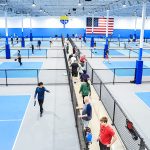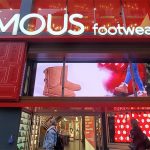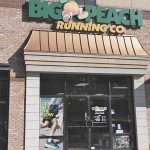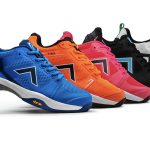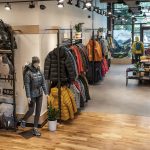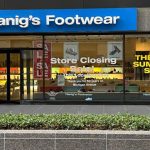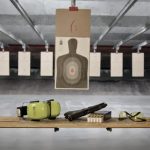With a plan built around speeding turnaround, increasing its presence in major cities and customization, Adidas AG revealed a new five-year plan that it projects will lift profits by 15 percent a year through 2020.
On the top-line, it expects to outperform the sporting goods industry with group sales growing at a “high-single-digit rate” for each of the next five years, to above €22 billion ($24 billion) by 2020. Among its core brands, high-single digit growth on five-year CAGR rate is expected for the Adidas Brand and Reebok while mid-single digit annual growth is projected for TaylorMade Adidas Golf.
The new business plan, named “Creating the New,” is built around three major strategic choices: Speed, Cities and Open Source.
Speed
At its Investor Day in Herzogenaurach, Adidas officials noted that with its NEO label, the Group has already set new standards around speed to market getting gets new products into store in 45 days, compared with a sports industry standard of 12 to 18 months. Drawing on this success, the company “intends to roll out this mantra of ‘speed’ across the entire group.”
Toward that end, one goal includes reducing the number of models it sells by 25 percent. It also plans to run more automated factory pods that that would allow Adidas to shift manufacturing from Asia closer to consumers.
Chief Executive Herbert Hainer noted that the current six weeks it takes to ship from Asia to Europe was too lengthy.
“We will bring production back to where the main markets are,” said Hainer. “Robots can be everywhere.”
Added Claire Midwood, who runs Adidas' NEO brand, “Our 2020 vision is to have fully automated and scalable manufacturing wherever we want and wherever the consumer desires it.”
Also complementing the Speed effort, Adidas will further increase its sales through “controlled space activities,” or its own stores and e-commerce channels, to above 60 percent of sales, up from 50 percent currently. It plans to open another 500 to 600 stores to achieve that goal.
At the same time, the group aims to expand its e-commerce business to above €2 billion ($2.18 bn) by 2020, quadrupling from 2014 levels. In 2014, e-commerce sales vaulted 72 percent, to more than €420 million ($462 mm). Adidas plans implement a “true omni-channel approach” to drive online growth. Further, the company plans to evolve production capabilities to dramatically expand product customization options for its consumers.
“Only what is new is relevant to the consumer,” said Hainer. “Therefore, we have to relentlessly focus on ‘creating the new’ for our consumers. And we have to constantly re-invent ourselves as an organization to lead the change in our industry. Going forward, speed will be a key competitive advantage for us as we transform the Adidas Group into the first true fast sports company.”
Cities
With 80 percent of global GDP generated in cities and global trends being increasingly shaped in metropolitan areas, Adidas aims to increase its focus on six global key cities: Los Angeles, New York, London, Paris, Shanghai and Tokyo. Across these cities, the Adidas Group “will over-proportionally invest in talent, attention and marketing spend.”
“Global brands are created in global cities,” said Roland Auschel, executive board member responsible for global sales. “If we win running in New York and Los Angeles, we will win running in the US. Therefore, we are committed to win market and mind share in key cities around the globe.”
“Our business in London today is bigger than our business in Finland,” added Hainer. “Since 1990, the number of megacities with more than 10 million inhabitants has tripled. These are the ‘halo’ locations where the perceptions of brands will be shaped. From there, they will spread to the rest of the world.”
Open Source
In order to capture growth opportunities even more effectively than before, the Adidas Group will focus investments across its core brand portfolio: Adidas, Reebok and TaylorMade. Further, the group is introducing Open Source, described as “a strong commitment to further strengthen the company’s ties with its consumers.” By bringing consumers into the process of how the company creates, designs and presents products, Adidas expects to engage with consumers, athletes, retailers and partners “more than ever before, make them become part of its brands and, as a result, increasingly build brand advocacy.”
“We are closest to every consumer with our unique brand portfolio,” said Eric Liedtke, executive board member responsible for global brands. “In the future, we will not only talk to and talk with our consumers. We will be the first sports company that invites athletes, consumers and partners to be part of its brands. We will open up so that they can co-create the future together with us.”
Adidas noted that it is already working together with influencers and organizations such as Stella McCartney, Kanye West, BASF or Google on such approaches.
Other goals stated at the meeting included retaining its global leadership position in both football (soccer) and Originals in the lifestyle space, doubling sales in running and increasing its appeal to female athletes. A particular priority will be investing in Western Europe and North America.
“We did not focus enough on the needs of our consumer,” said Hainer. “This was a result of our function-driven organization, which slowed down our decision-making, making us and our plan too static and not agile enough. Losing our number two position in North America is a direct consequence of that. We just haven’t connected well enough with the U.S. consumer. We didn’t focus on the right products. We underinvested.”
In North America, the “largest brand investment ever” for the Adidas Brand is planned, said Mark King, president of Adidas North America. Priorities include deepening conections wiht consumers in New York, Los Angeles, Chicago, Miami and Atlanta as well as adding 55 new locations over the next 30 months. Goals include leading the region with football (soccer) and Originals, dramatic market share gains in running as well as with NEO, and amplifying training.
The North American turnaround also includes hiring of three Nike shoe designers for a new Brooklyn, N.Y., studio – Adidas’s first American design outpost outside U.S. headquarters in Portland, OR to help create more relevant products for the urban set. It also plans to sponsor up to 500 NFL and MLB players over the next few years, up from the few dozen today. But King insisted Adidas’ North America strategy isn’t a reaction to Nike and Under Armour.
“Of course we look at who the competitors are and what they’re doing,” said Mark King, president of Adidas North America. “But we don’t build our strategy around blocking them.”
On its financial goals, it expects earnings to grow at a faster rate than sales due to both margin expansion and operating leverage. The margin expansion is expected to be driven by improved speed to market, the range reduction, the controlled space rollout and factory automation. Operating leverage is expected to stem from an enhanced organizational set-up, retail productivity, the e-commerce expansion, and a focus on key product franchises.
Due to the continued focus on cash creation, Adidas’ cash flow is anticipated to grow at a faster rate compared to the operating profit in each of the next five years. Coupled with the company’s “already very healthy” financial position, the company said this will create rooms for dividend payments. As a result, Adidas intends to pay out between 30 percent and 50 percent of its net income attributable to shareholders, up from 20 to 40 percent previously. Its multi-year shareholder return program of up to €1.5 billion ($1.63 bn) launched in the fourth quarter of 2014 will continue.
The new five-year plan comes after the Adidas last summer abandoned its last five-year plan, Route 2015. The plan had called for €17 billion in sales and an 11 percent operating margin this year. Hainer conceded the new “Creating the New” plan would not translate into a double-digit operating margin.
Earlier this month, the company reported 2014 net profit of €490 million, down from €787 million the year before on sales worth €14.5 billion.
At its Investor Day, Hainer noted that Route 15 delivered some progress, including 40 percent revenue growth on a c-n basis and 70 percent growth on a c-n basis in emerging markets. Other highlights included the e-commerce growth, the NEO label surpassing $1 billion, and controlled space reaching 50 percent of the business.
The shortfalls were pointed out as:
Diluted brand desirability,
Loss of agility and speed
Underperformed in North America
Reebok transformation took too long
Profitability shortfall
“We lost some of our brand desirability because we didn’t focus enough on the needs of our consumers,” Hainer said. “We don’t need to win everywhere, but we need to win where the halo effects are created. We need to put our money where we can make a real difference.”
While Hainer took “full responsibility” for the shortfall, they also in part reflected a few outside events, including political turmoil in Russia, where Adidas is strongly entrenched, and the resulting decline of the ruble. Revenues in TaylorMade-Adidas Golf also tumbled partly due to widespread challenges in the golf category and declines in the sports participation.
Some Adidas investors have questioned Hainer’s leadership and recently pushed for his departure, particularly with Nike gaining significant ground in Adidas’ core Western Europe markets and Adidas falling into third place in North America behind Under Armour. Adidas said last month that it had started looking for his successor. The 60-year-old executive’s contract runs through March 2017.
In the Q&A session, officials did not address the succession timing. Hainer stated, “This plan will be brought forward with or without me.”



